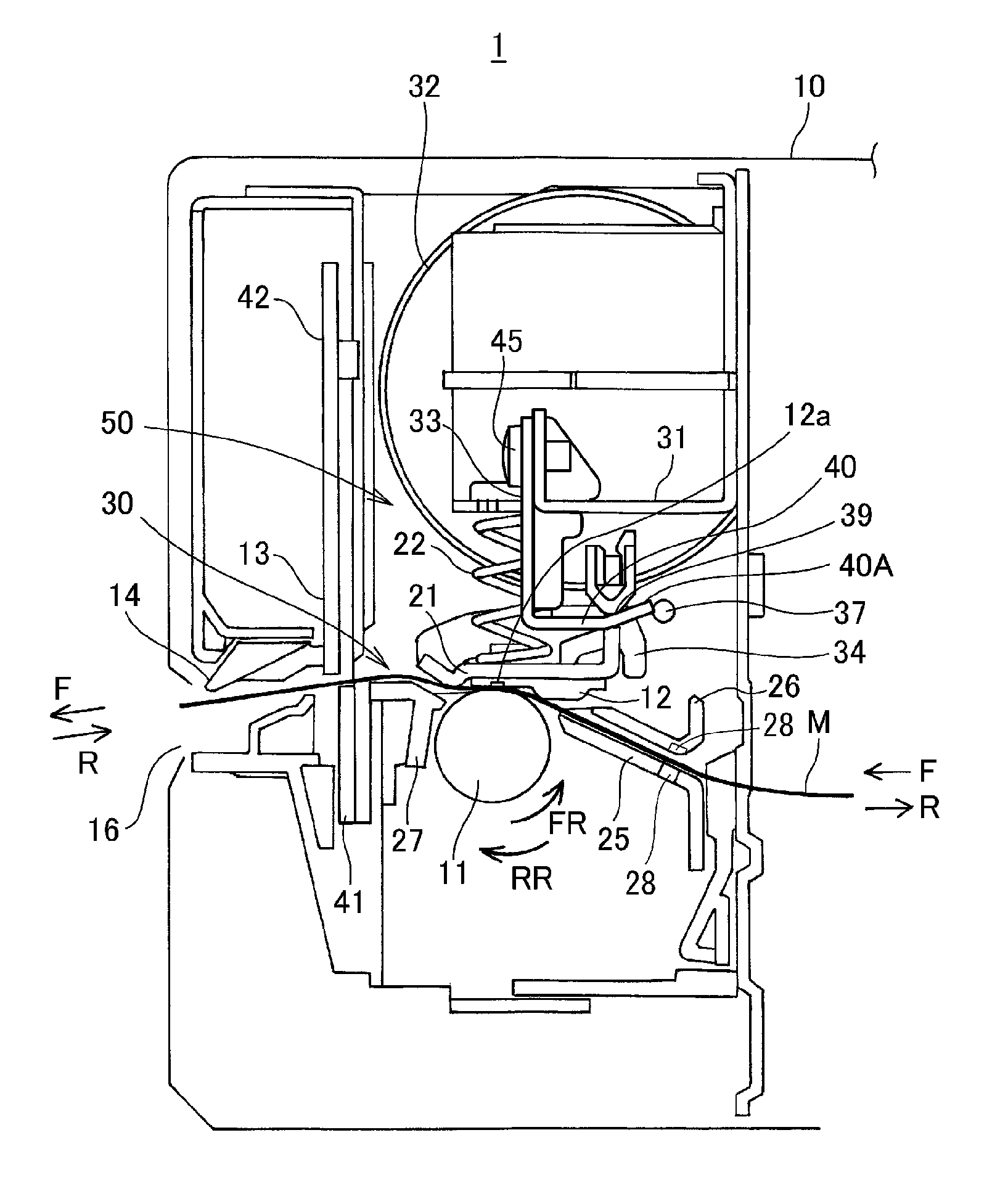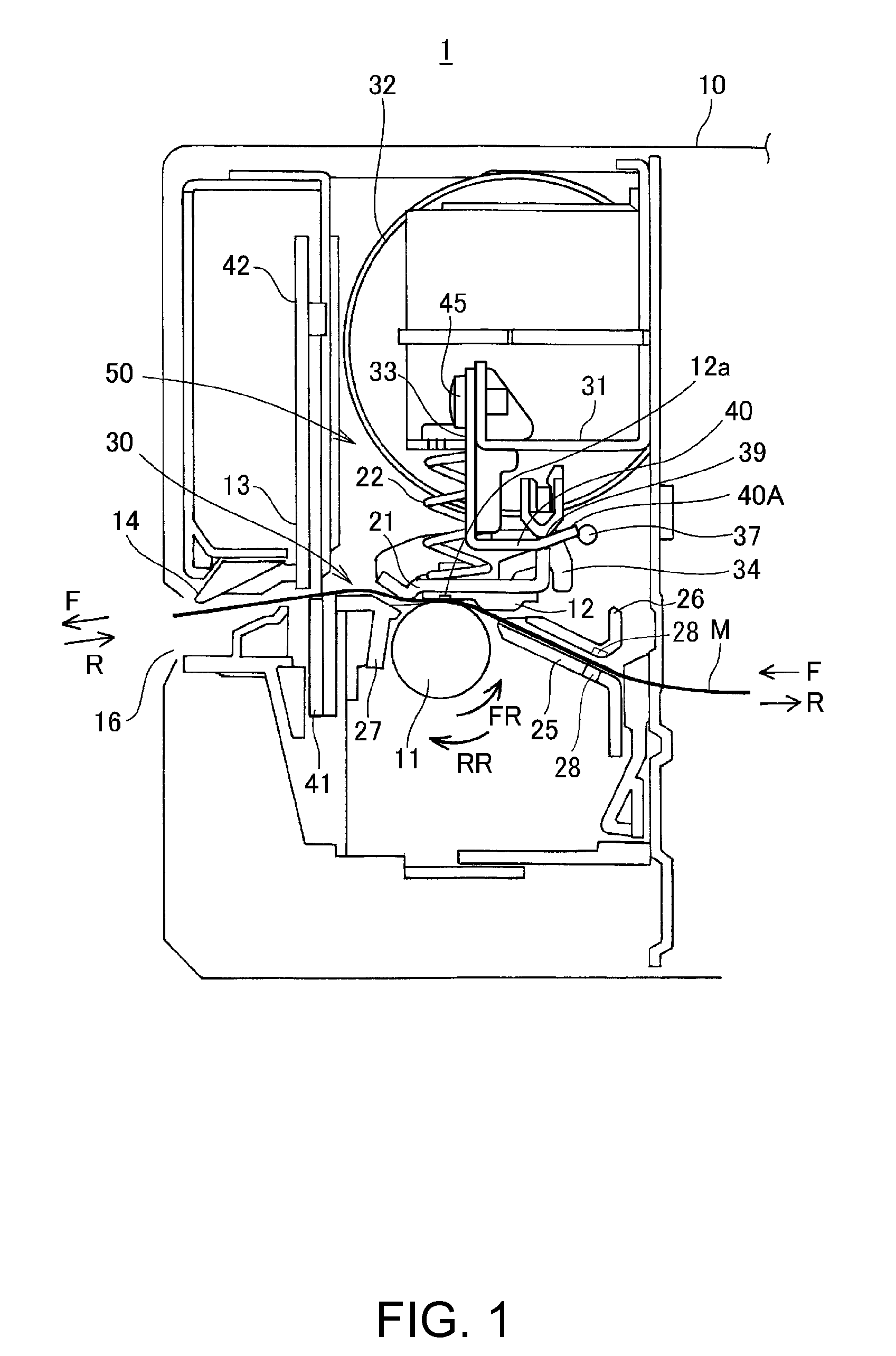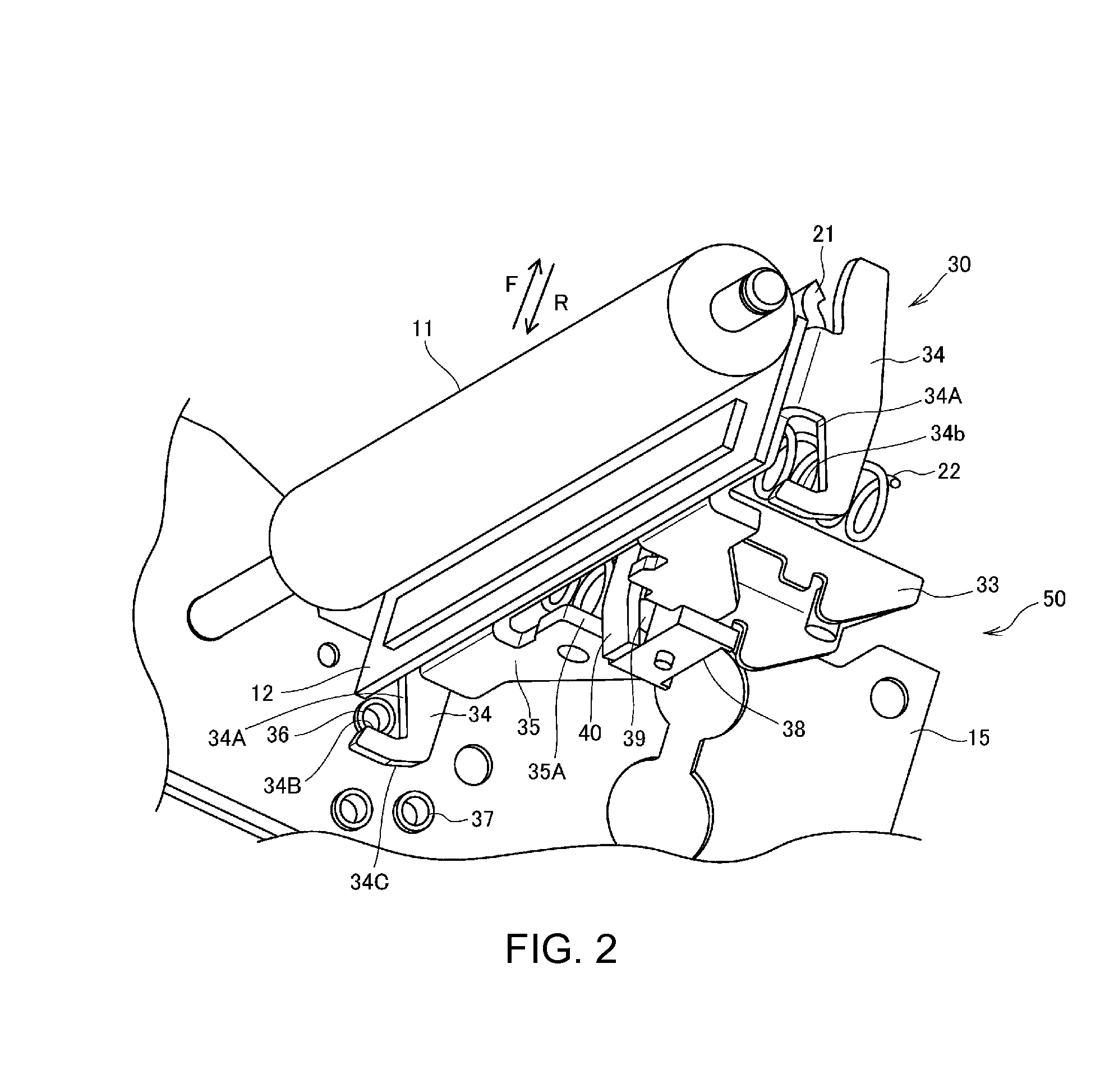Printing device, printhead, and method of positioning print media in a printer
- Summary
- Abstract
- Description
- Claims
- Application Information
AI Technical Summary
Benefits of technology
Problems solved by technology
Method used
Image
Examples
embodiment 1
[0068]FIG. 1 is a side section view showing ma in parts in the configuration of a printer 1 (printing device) according to a first embodiment of the invention, and FIG. 2 is an oblique view showing the relative positions of the platen roller 11 and printhead 30. FIG. 1 is a side view of the configuration inside the case 10 of the printer 1. The left side of the printer as shown in FIG. 1 is the front of the printer 1.
[0069]The printer 1 has functional units including the platen roller 11, the printhead 30, an automatic cutter 13, and a manual cutter 14 inside a basically box-shaped case 10. The printer 1 conveys continuous paper M used as the print medium by rotation of the platen roller 11, and prints text or images on the printing surface of the continuous paper M with the printhead 30. The printed continuous paper M is then discharged from a paper exit 16 open in the front of the case 10.
[0070]The continuous paper M is held in a paper storage unit (not shown in the figure) config...
embodiment 2
[0109]A second embodiment of the invention is described next with reference to FIG. 6 to FIG. 8. Note that like parts in this and the printer 1 according to the first embodiment described above are identified by like reference numerals, and further description thereof is omitted.
[0110]FIG. 6 is a side section, view showing main parts in the configuration of a printer 5 (printing device) according to this embodiment of the invention. FIG. 6 shows a side view of the configuration inside the case 10 of the printer 5. The left side in FIG. 6 is the front of the printer 5.
[0111]Similarly to printer 1, this printer 5 has functional units including the platen roller 11, a printhead 60, an automatic cutter 13, and a manual cutter 14 inside a basically box-shaped case 10. The printer 5 conveys continuous paper M used as the print medium by rotation of the platen roller 11, and prints text or images on the printing surface of the continuous paper M with the printhead 60. The printed continuou...
embodiment 3
[0121]In the printer 1 according to the first embodiment and the printer 5 according to the second embodiment of the invention, the continuous paper M sticking to the head unit 12 can be easily resolved by rotating the platen roller 11 in the reverse direction (RR). In other words, when the platen roller 11 turns in the reverse direction (RR) to unstick the medium, the head unit 12 moves in the direction away from the platen roller 11, and the adhesive force weakens. Slipping therefore occurs more easily when conveying the continuous paper M in reverse (R) than when conveying the continuous paper M forward (F) because the adhesive force on the continuous paper M is lower. As a result, the amount that the continuous paper M is actually conveyed (moved) will therefore differ when the continuous paper M is conveyed forward (F) and when the continuous paper H is conveyed in reverse (R) even if the platen roller 11 turns the same amount. In other words, the conveyance distance of the con...
PUM
 Login to View More
Login to View More Abstract
Description
Claims
Application Information
 Login to View More
Login to View More - R&D
- Intellectual Property
- Life Sciences
- Materials
- Tech Scout
- Unparalleled Data Quality
- Higher Quality Content
- 60% Fewer Hallucinations
Browse by: Latest US Patents, China's latest patents, Technical Efficacy Thesaurus, Application Domain, Technology Topic, Popular Technical Reports.
© 2025 PatSnap. All rights reserved.Legal|Privacy policy|Modern Slavery Act Transparency Statement|Sitemap|About US| Contact US: help@patsnap.com



